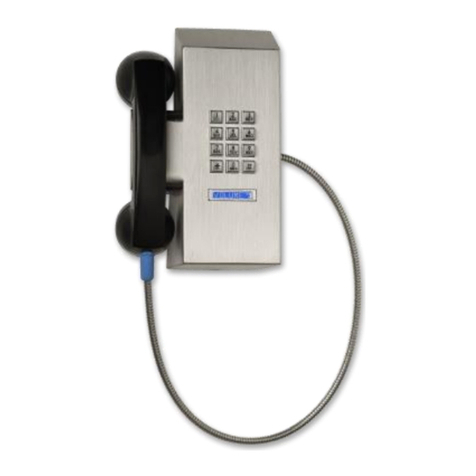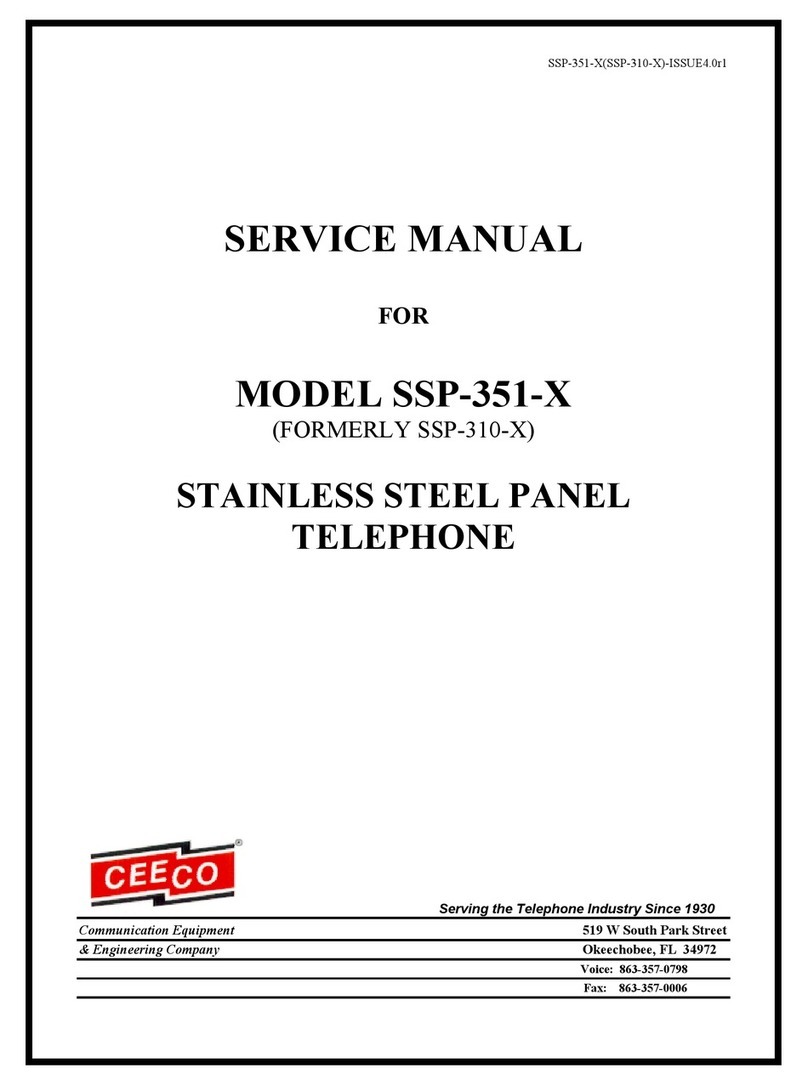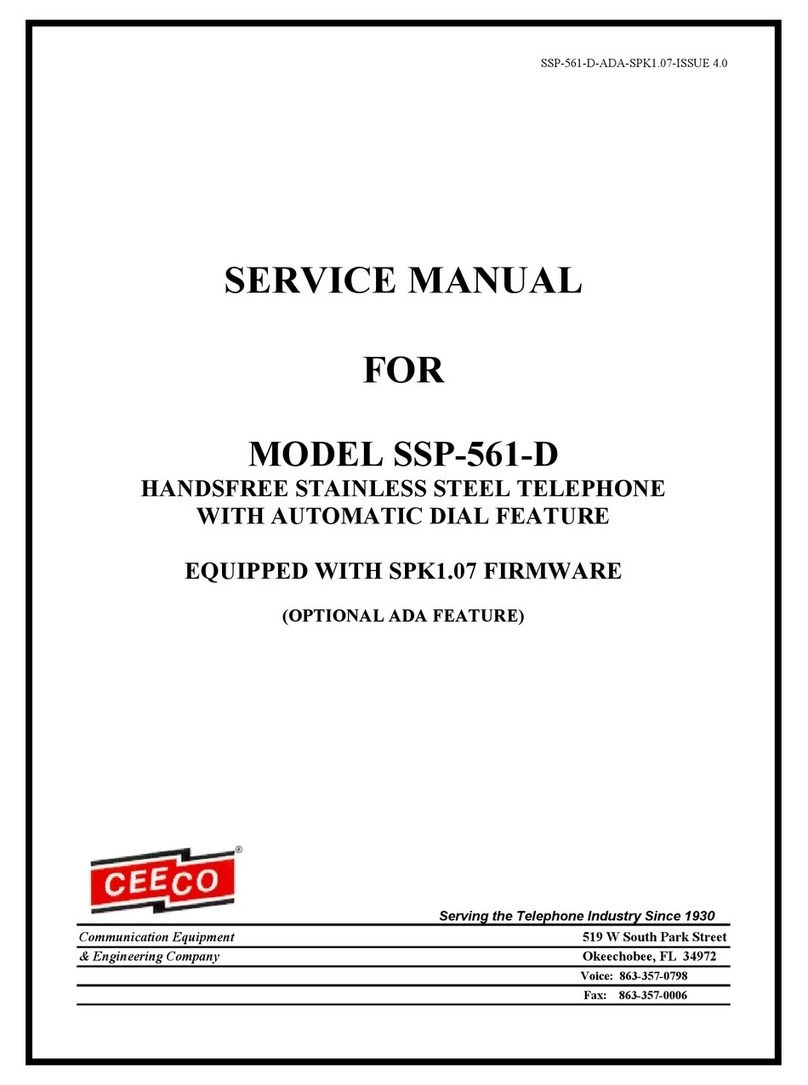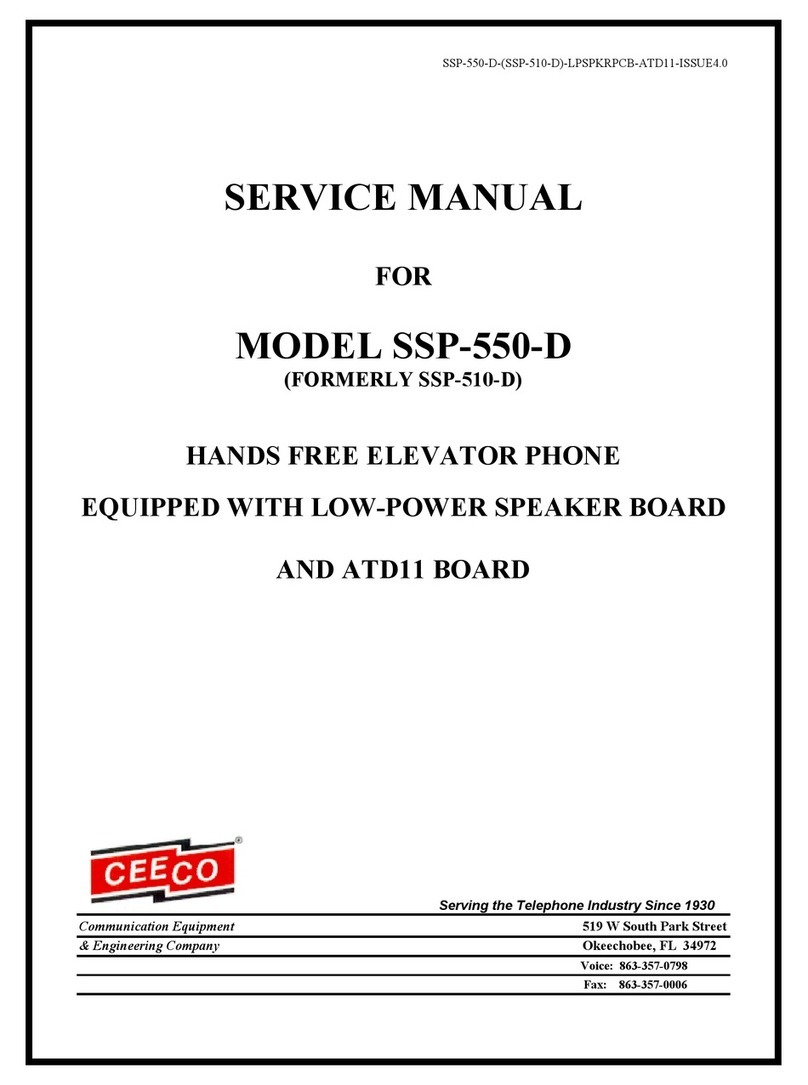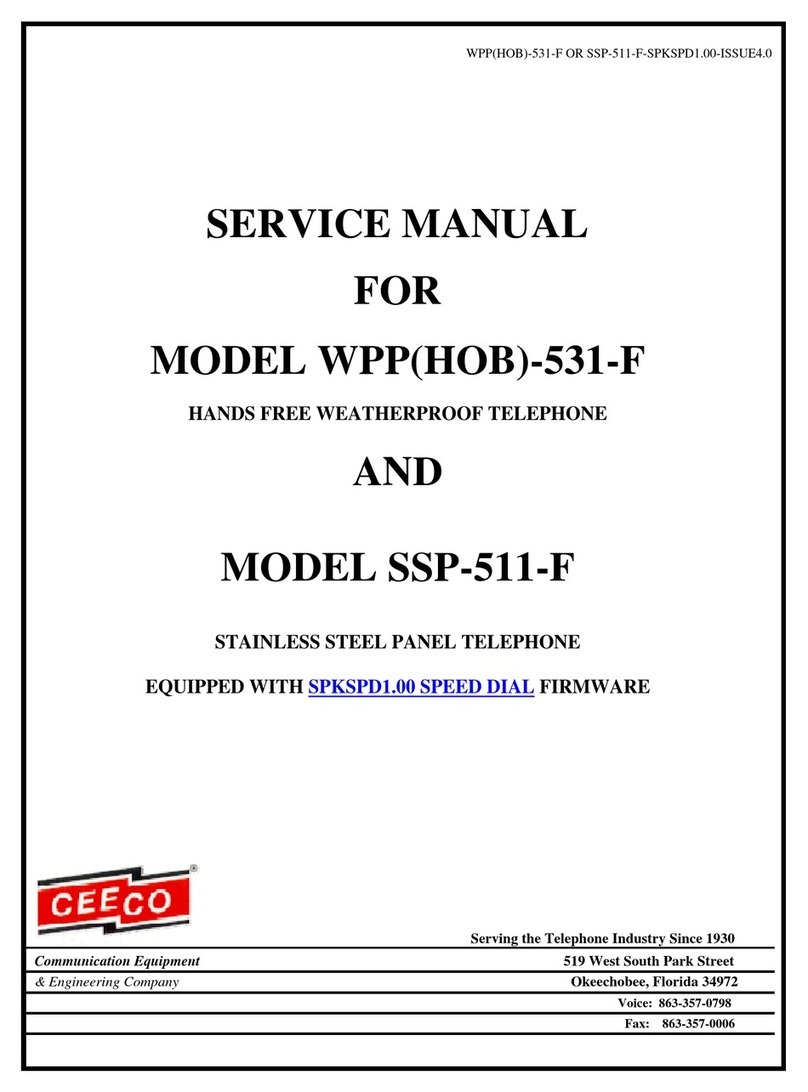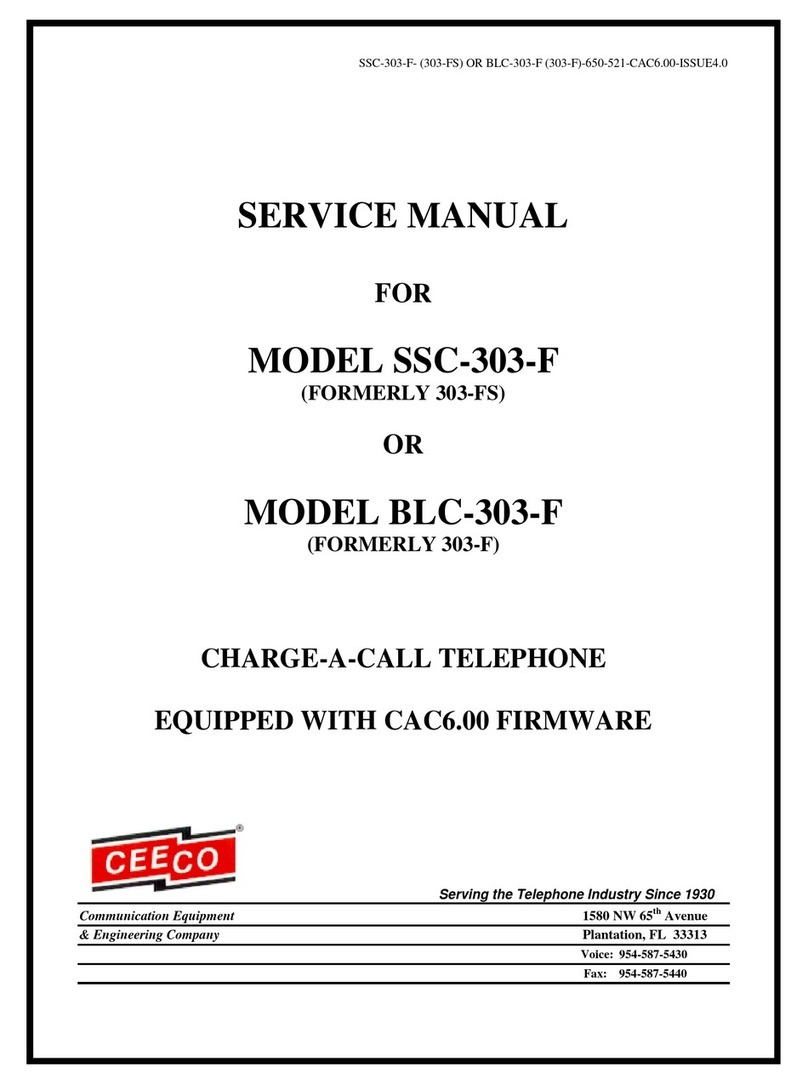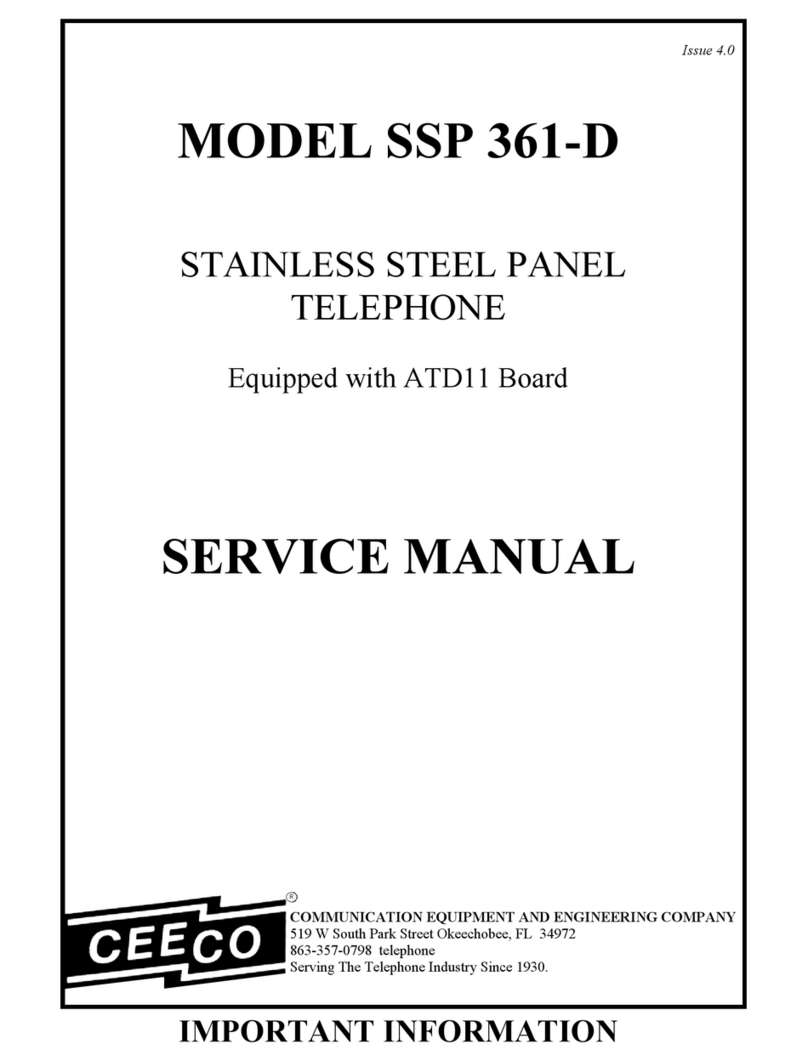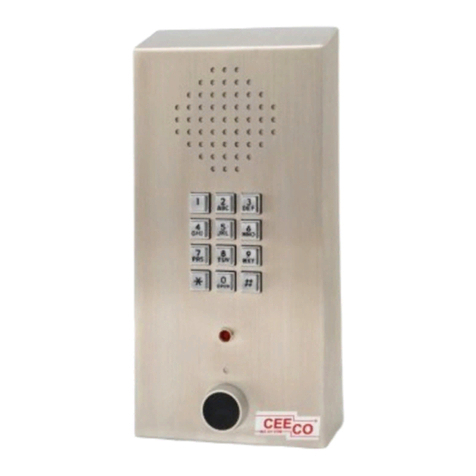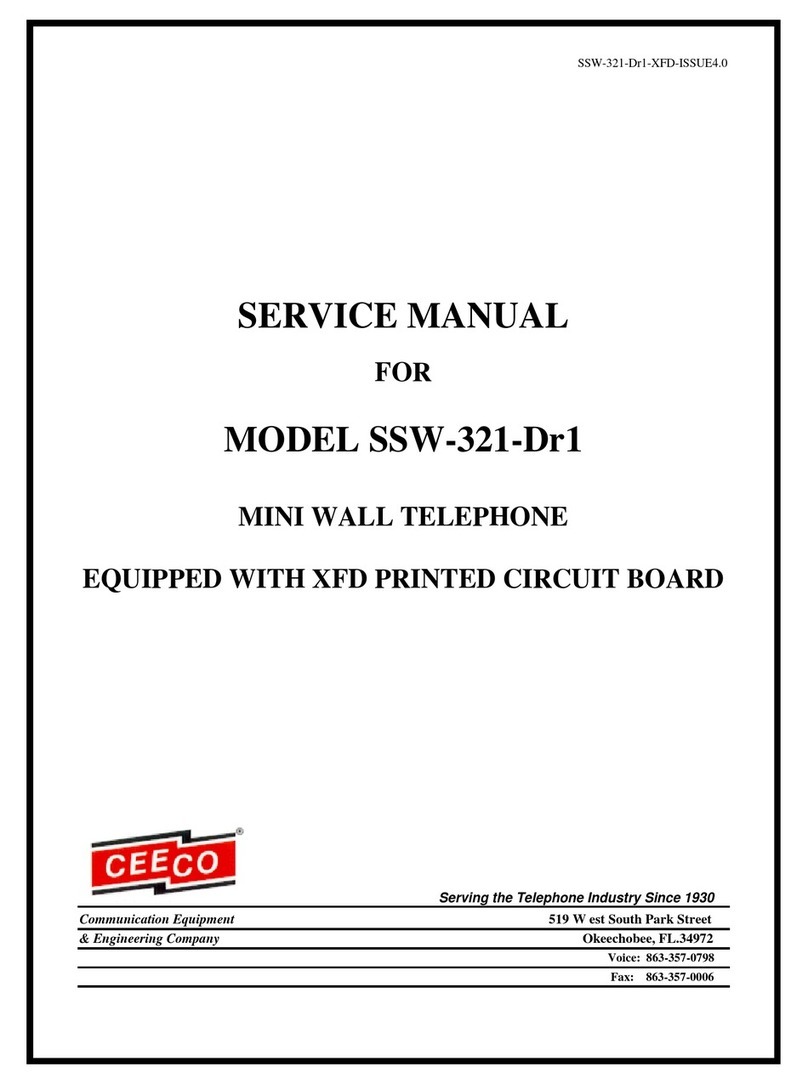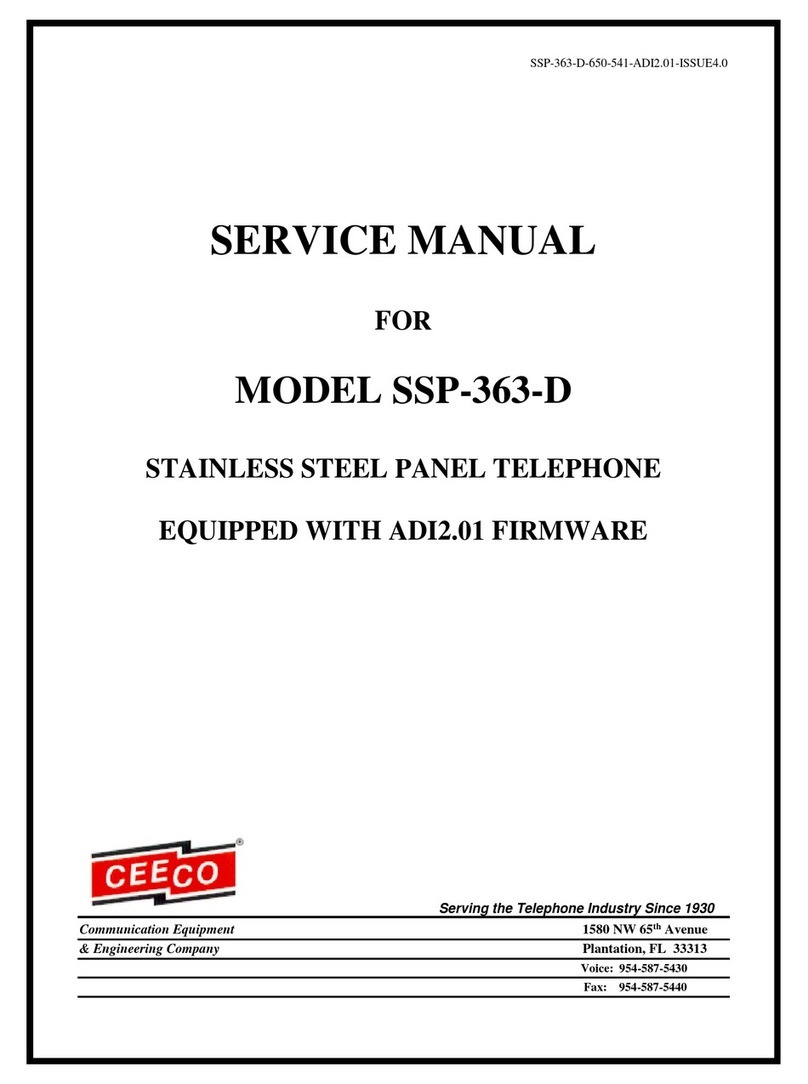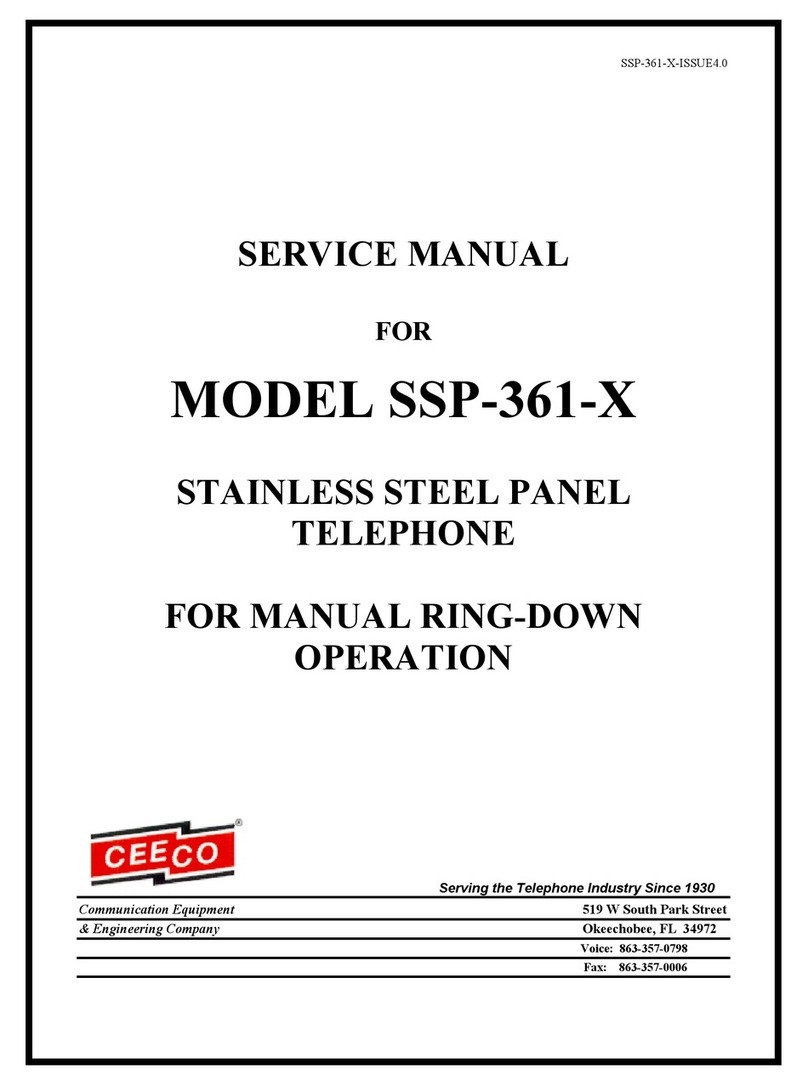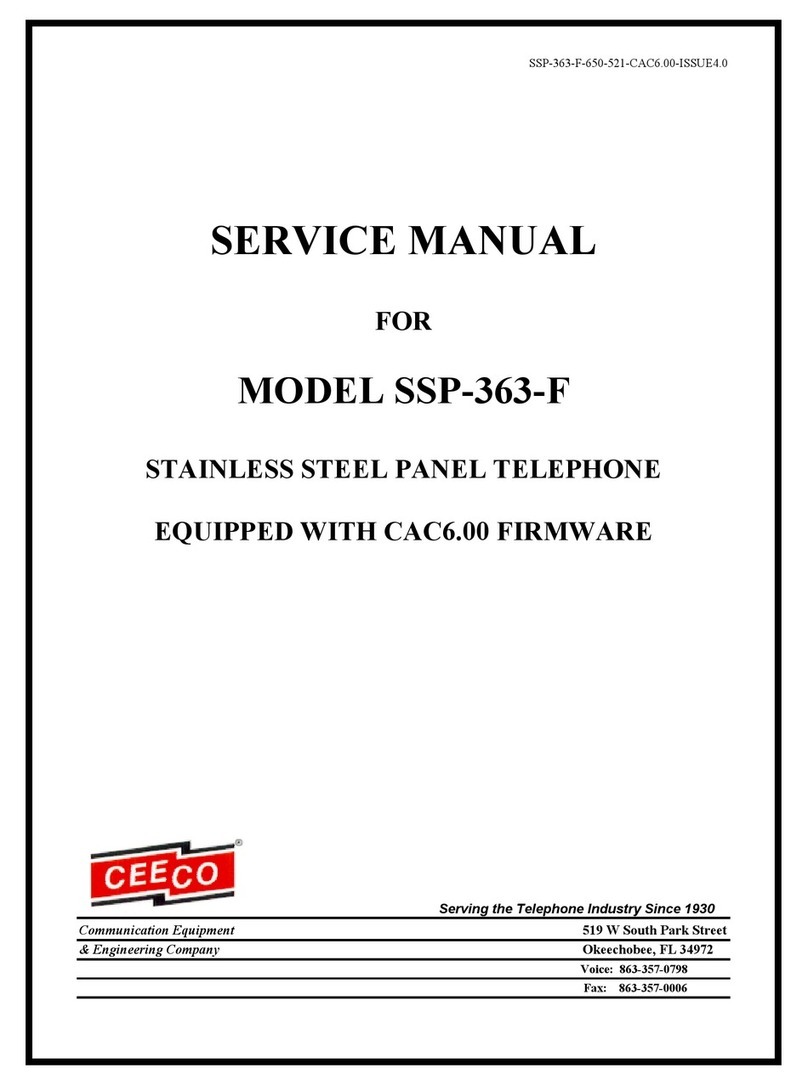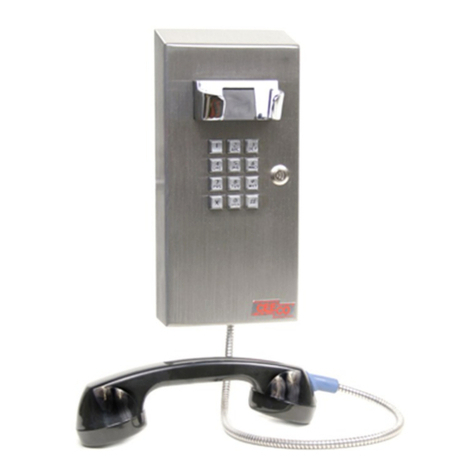
ISSUE 4.0
CEECO
Communication Equipment & Engineering Company
PROPRIETARY
6
3.6 If the number to be programmed is a (1+) or long-distance call, locate the
plastic mini-jumper at the “J1” position location of the ATD-11 printed
circuit board. The ATD-11 circuit board has a smaller board mounted to
it, which has several rows and columns of copper contacts/pins on it. The
“J1” position you are looking for is located just below the bottom right
hand corner of that smaller piggyback board. The “J1” position has three
copper contacts/pins, with a plastic mini-jumper, and is readily identified
by the “+1” that appears on the board in small white print just to its left.
By moving the plastic mini-jumper so that it bridges the middle copper pin
and the far left or “+1” pin, you will cause the digit “1” to automatically
dial out prior to any other programmed number. If your desired number is
local or does not need a preceding one, then move the mini-jumper to
bridge the middle copper pin and the far right pin. You will observe a “P”
in small white print on the circuit board just right of this right hand pin.
(Please refer to diagram 3.12, on page 8).
3.7 Next, locate the plastic mini-jumper at the “J3” position of the circuit
board, which is just below the “J1” position. It could also be considered
the second plastic mini-jumper below the bottom right hand corner of the
small piggyback board. Just left of this “J3” position, in small white print,
appears “11”, bridging the middle and far left corner pins. The “J3” mini-
jumper should always be in this position, regardless of the number you are
programming. (Refer to diagram 3.12 on page 8).
3.10 Now let’s program the number to be automatically dialed. Looking at
the piggyback circuit board containing several rows and columns of
copper pins, you will see ten plastic mini-jumpers. The rows are labeled
1 thru 0 on the left side of the circuit board. The columns are labeled A
thru K across the top of the circuit board and the columns of copper pins
are in pairs. Each pair of copper pins represents a number to be dialed.
For example, let’s assume that you want to program the phone to dial 1-
954-587-5430. Place the plastic mini-jumper under column “A” across
the two copper pins that align with row “9”. Place the mini-jumper under
column “B” so that it bridges the pair of copper pins in row “5”. Place the
mini-jumper under column “C” across the pair of copper pins in row “4”
and so on, until the entire number is programmed. Each column
represents a digit, so do not skip any. This example happens to include a
long distance number, so you would move the “J1” jumper to the “+1”
position. If your desired number were short, like 911 for example, the
programming would be slightly different. In a case such as that, you
would place the jumper under column “A” in the “9” position and the
jumpers under columns “B” and “C” in the “1” position. You would then
remove the seven remaining black plastic mini-jumpers, with the
exception of positions J1, J2 & J3, so that no erroneous digits dial out.


